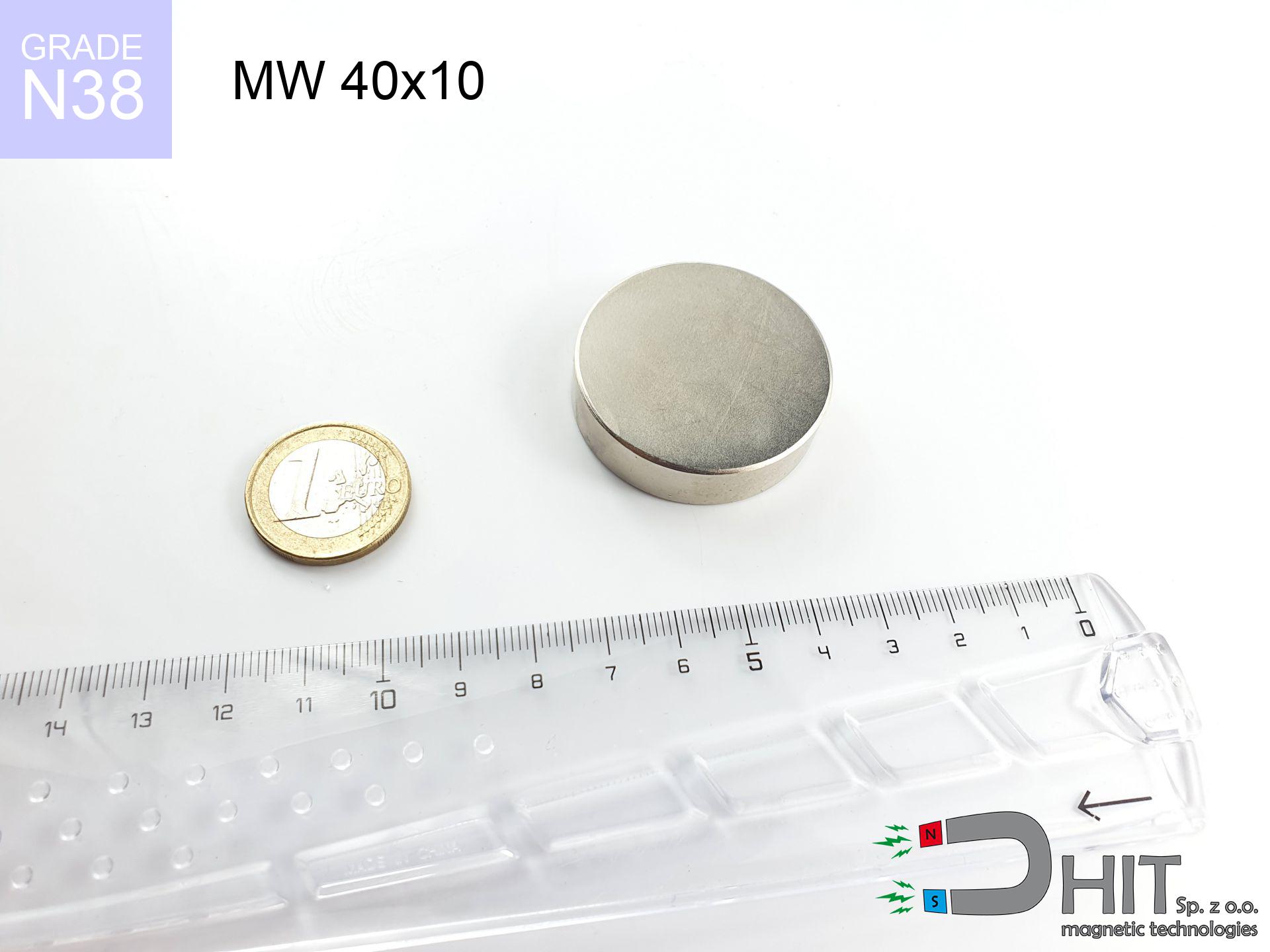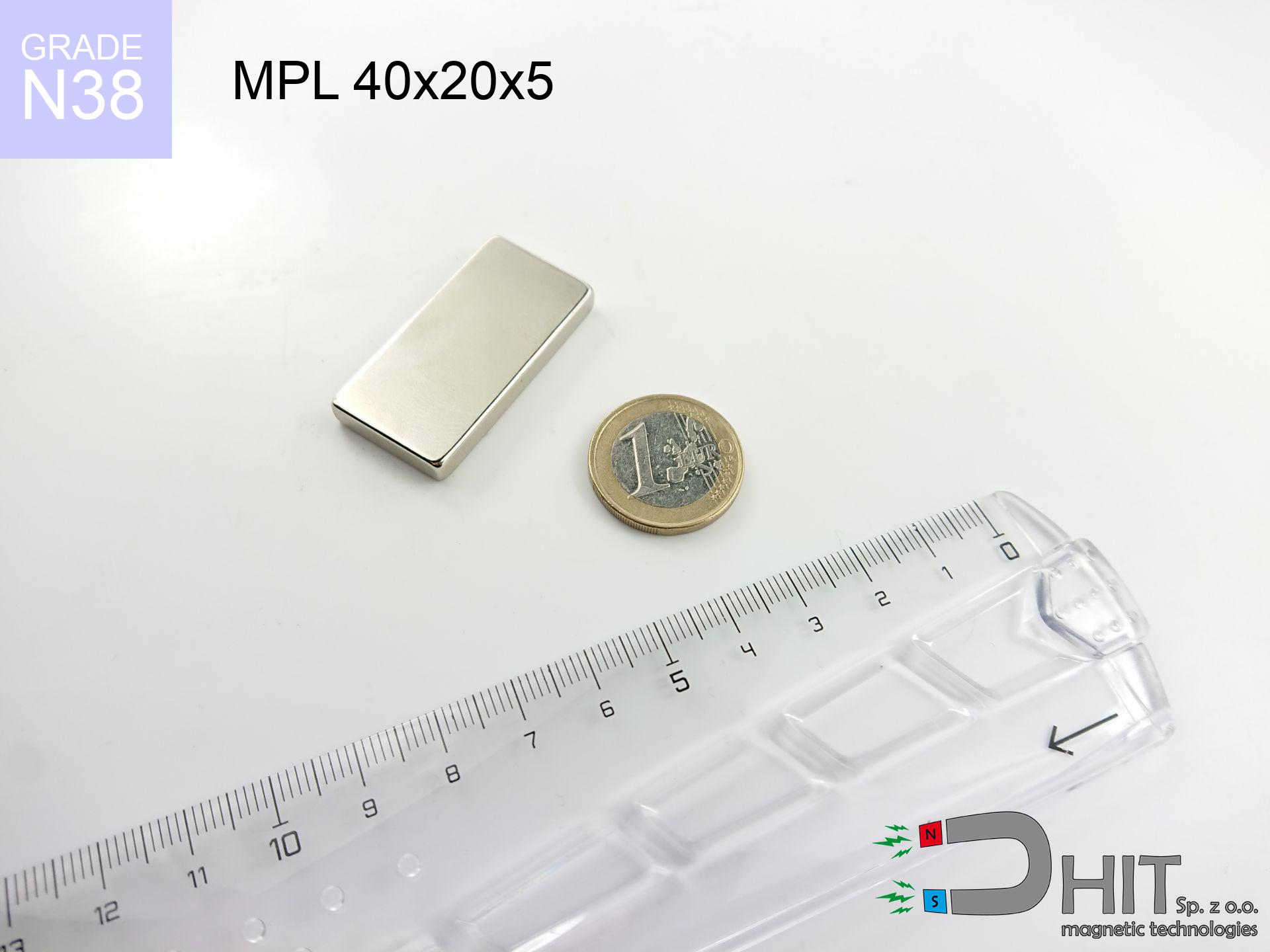AM Magnetyczny zbieracz / N38 - magnetic accessories
magnetic accessories
Catalog no 080499
Magnetization Direction
↑ axial
Coating
[NiCuNi] Nickel
1.230 ZŁ with VAT / pcs + price for transport
1.000 ZŁ net + 23% VAT / pcs
bulk discounts:
Need more?
Call us now
+48 22 499 98 98
if you prefer let us know through
request form
the contact section.
Strength as well as form of a neodymium magnet can be checked using our
online calculation tool.
Order by 14:00 and we’ll ship today!
Technical specification - AM Magnetyczny zbieracz / N38 - magnetic accessories
Specification / characteristics - AM Magnetyczny zbieracz / N38 - magnetic accessories
| properties | values |
|---|---|
| Cat. no. | 080499 |
| Production/Distribution | Dhit sp. z o.o. |
| Country of origin | Poland / China / Germany |
| Customs code | 85059029 |
| Magnetization Direction | ↑ axial |
| Coating | [NiCuNi] Nickel |
| Manufacturing Tolerance | ±1 mm |
Magnetic properties of material N38
| properties | values | units |
|---|---|---|
| remenance Br [min. - max.] ? | 12.2-12.6 | kGs |
| remenance Br [min. - max.] ? | 1220-1260 | mT |
| coercivity bHc ? | 10.8-11.5 | kOe |
| coercivity bHc ? | 860-915 | kA/m |
| actual internal force iHc | ≥ 12 | kOe |
| actual internal force iHc | ≥ 955 | kA/m |
| energy density [min. - max.] ? | 36-38 | BH max MGOe |
| energy density [min. - max.] ? | 287-303 | BH max KJ/m |
| max. temperature ? | ≤ 80 | °C |
Physical properties of sintered neodymium magnets Nd2Fe14B at 20°C
| properties | values | units |
|---|---|---|
| Vickers hardness | ≥550 | Hv |
| Density | ≥7.4 | g/cm3 |
| Curie Temperature TC | 312 - 380 | °C |
| Curie Temperature TF | 593 - 716 | °F |
| Specific resistance | 150 | μΩ⋅cm |
| Bending strength | 250 | MPa |
| Compressive strength | 1000~1100 | MPa |
| Thermal expansion parallel (∥) to orientation (M) | (3-4) x 10-6 | °C-1 |
| Thermal expansion perpendicular (⊥) to orientation (M) | -(1-3) x 10-6 | °C-1 |
| Young's modulus | 1.7 x 104 | kg/mm² |
Chemical composition
| iron (Fe) | 64% – 68% |
| neodymium (Nd) | 29% – 32% |
| boron (B) | 1.1% – 1.2% |
| dysprosium (Dy) | 0.5% – 2.0% |
| coating (Ni-Cu-Ni) | < 0.05% |
Sustainability
| recyclability (EoL) | 100% |
| recycled raw materials | ~10% (pre-cons) |
| carbon footprint | low / zredukowany |
| waste code (EWC) | 16 02 16 |
Other proposals
Advantages and disadvantages of Nd2Fe14B magnets.
Pros
- They retain full power for nearly ten years – the loss is just ~1% (in theory),
- They maintain their magnetic properties even under close interference source,
- In other words, due to the metallic surface of gold, the element looks attractive,
- The surface of neodymium magnets generates a intense magnetic field – this is one of their assets,
- Made from properly selected components, these magnets show impressive resistance to high heat, enabling them to function (depending on their shape) at temperatures up to 230°C and above...
- Due to the potential of accurate shaping and customization to individualized needs, NdFeB magnets can be manufactured in a broad palette of shapes and sizes, which expands the range of possible applications,
- Huge importance in advanced technology sectors – they are used in HDD drives, electric drive systems, diagnostic systems, and technologically advanced constructions.
- Relatively small size with high pulling force – neodymium magnets offer high power in tiny dimensions, which allows their use in miniature devices
Disadvantages
- They are fragile upon heavy impacts. To avoid cracks, it is worth protecting magnets using a steel holder. Such protection not only protects the magnet but also increases its resistance to damage
- We warn that neodymium magnets can reduce their power at high temperatures. To prevent this, we suggest our specialized [AH] magnets, which work effectively even at 230°C.
- Magnets exposed to a humid environment can rust. Therefore while using outdoors, we advise using water-impermeable magnets made of rubber, plastic or other material protecting against moisture
- We suggest cover - magnetic mechanism, due to difficulties in realizing threads inside the magnet and complex forms.
- Health risk to health – tiny shards of magnets pose a threat, when accidentally swallowed, which gains importance in the aspect of protecting the youngest. It is also worth noting that small components of these magnets are able to complicate diagnosis medical after entering the body.
- Higher cost of purchase is one of the disadvantages compared to ceramic magnets, especially in budget applications
Holding force characteristics
Maximum holding power of the magnet – what it depends on?
- with the use of a sheet made of special test steel, ensuring maximum field concentration
- possessing a massiveness of at least 10 mm to avoid saturation
- with an ground touching surface
- with direct contact (without paint)
- under perpendicular force vector (90-degree angle)
- in temp. approx. 20°C
Lifting capacity in practice – influencing factors
- Distance – the presence of any layer (paint, tape, gap) acts as an insulator, which reduces power rapidly (even by 50% at 0.5 mm).
- Loading method – declared lifting capacity refers to detachment vertically. When applying parallel force, the magnet exhibits significantly lower power (often approx. 20-30% of maximum force).
- Steel thickness – insufficiently thick plate does not close the flux, causing part of the flux to be wasted to the other side.
- Material type – the best choice is pure iron steel. Hardened steels may generate lower lifting capacity.
- Surface quality – the more even the surface, the better the adhesion and stronger the hold. Unevenness acts like micro-gaps.
- Temperature influence – hot environment reduces pulling force. Exceeding the limit temperature can permanently damage the magnet.
Holding force was tested on a smooth steel plate of 20 mm thickness, when a perpendicular force was applied, in contrast under shearing force the lifting capacity is smaller. In addition, even a small distance between the magnet and the plate reduces the lifting capacity.
Warnings
Sensitization to coating
Some people experience a sensitization to Ni, which is the common plating for neodymium magnets. Extended handling might lead to a rash. We suggest use safety gloves.
Do not overheat magnets
Watch the temperature. Heating the magnet to high heat will ruin its properties and strength.
Life threat
For implant holders: Strong magnetic fields affect electronics. Keep minimum 30 cm distance or ask another person to work with the magnets.
Pinching danger
Pinching hazard: The pulling power is so immense that it can result in hematomas, crushing, and even bone fractures. Protective gloves are recommended.
Dust is flammable
Dust produced during cutting of magnets is flammable. Avoid drilling into magnets without proper cooling and knowledge.
GPS and phone interference
A strong magnetic field disrupts the functioning of magnetometers in phones and GPS navigation. Maintain magnets close to a device to prevent damaging the sensors.
Caution required
Before use, check safety instructions. Uncontrolled attraction can break the magnet or injure your hand. Think ahead.
Shattering risk
Watch out for shards. Magnets can fracture upon uncontrolled impact, launching shards into the air. Wear goggles.
Keep away from computers
Equipment safety: Strong magnets can ruin payment cards and delicate electronics (pacemakers, hearing aids, timepieces).
Choking Hazard
NdFeB magnets are not intended for children. Accidental ingestion of multiple magnets may result in them attracting across intestines, which constitutes a critical condition and requires immediate surgery.





![UMGGZ 34x6 [M4] GZ / N38 - rubber magnetic holder external thread UMGGZ 34x6 [M4] GZ / N38 - rubber magnetic holder external thread](https://cdn3.dhit.pl/graphics/products/umg-34x6-m4-gz-rad.jpg)

